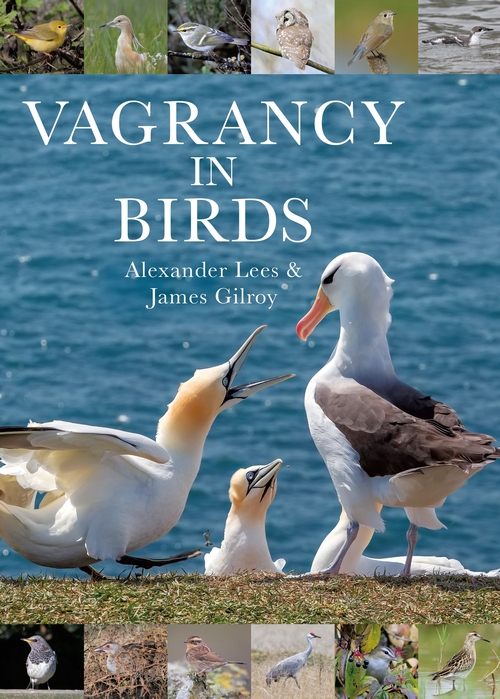Vagrancy in Birds
- Vagrancy in Birds by Alexander Lees and James Gilroy (Bloomsbury, London, 2021).
- 400 pages, 360 colour photos.
- ISBN 9781472964786. Hbk, £40.00
- Bookshop from £34.00
The concept that a Swallow can leave the barn that it fledged in, fly to sub-Saharan Africa, and return with pin-point accuracy to the same barn the following year (and repeat that feat many times over) is extraordinary. How birds manage to navigate so precisely over huge distances has been a source of fascination for centuries.
The attempt to understand how and why some birds get their directions wrong – in some cases spectacularly – is equally fascinating. This new book aims to answer the myriad questions relating to what factors drive avian vagrancy, and approaches the subject from a global viewpoint.
The opening chapters discuss our current understanding of how birds might navigate using the stars and Earth's magnetic field, before exploring the various theories on what then causes some of them to head off track. The text is concise and informative – well written, crisply edited and easy to read.
Vagrancy is not necessarily a bad thing and can lead to new migration routes and wintering areas. Bewick's Swan was not a regular winter visitor to eastern England before a cold winter on the Continent in 1938-39 pushed birds to seek new grazing grounds. On finding the fens, up to 8,000 returned annually, with juveniles learning the new route from their parents. UK wintering numbers have declined drastically this century – I only saw three on a trip to Welney WWT, Norfolk, recently! –caused by a combination of an overall population reduction and milder winters meaning that the birds have changed their migration strategy to remain on the Continent again.
How Yellow-browed Warblers and Richard's Pipits have adjusted their migration routes is less clear but still remarkable. For some families such as rails long-distance vagrancy has led to the colonisation new regions.
The bulk of the book deals with each family of birds, with examples of vagrancy potential and history. There are some extraordinary records detailed and the authors have chosen an excellent selection of photos to accompany the text. Many show the individual rarity mingling with other species that they wouldn't usually be expected to meet (the Black-browed Albatross with Mute Swans in Germany, for example) or in atypical habitat (like the Red-breasted Nuthatch sitting on a shoulder of a birder on a pelagic trip), which nicely reinforces the concept of vagrants being out of place.
This is a very enjoyable book, packed with information and a huge number of remarkable records. If you have an interest in migration and vagrancy you should definitely add it to your bookshelf.


